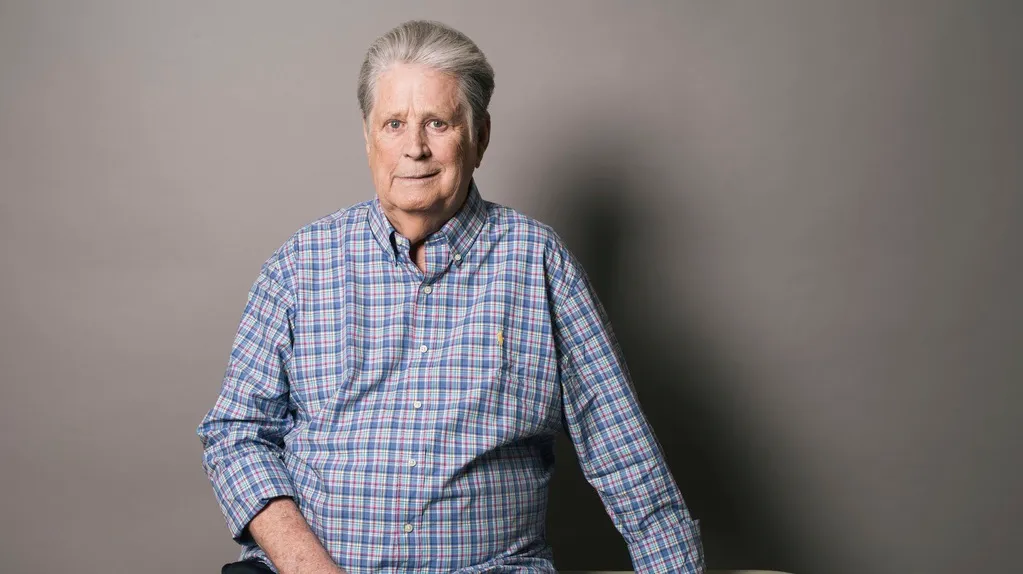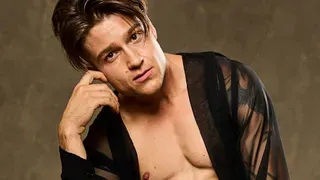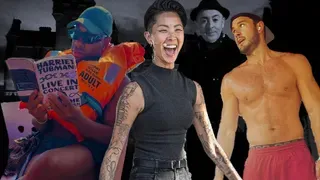April 29, 2016
Next Stop: Remembrance, Part 2
Matthew Wexler READ TIME: 8 MIN.
EDGE travel editor Matthew Wexler heads to Poland for an emotional journey that bridges the atrocities of the past to a future full of hope. This is the second of two installments. For part one, click here.
Wroclaw
Most Americans probably haven't heard of Wroclaw, but a scenic train ride through Poland's southwest countryside gives way to the city's epicenter, which at one point was the crossroads of an important trade route through Europe. Spared for much of World War II, it became a battleground between the Nazis and the Soviet Red Army during the war's final months. Hitler ordered the evacuation of civilians, declaring the city (then called Breslau) a fortress. Thousands died in the bitter cold, and by the end of the war nearly 80 percent of Wroclaw had been destroyed.
Today's Wroclaw cannot deny its past. It wasn't until 1990 that the German-Poland Border Treaty was finally settled, but borders don't define a city's pulse. Wroclow -- especially in 2016, as it celebrates its designation as the European Capital of Culture -- is thriving in unconventionally creative ways that you'd expect to see in New York City, London or Paris.
Eight curators were engaged to implement "an archipelago of the arts," one of them Chris Baldwin, who is responsible for two major works as part of the 2012 London Olympics. On June 11, Baldwin's Flow will overtake the city as an immersive exploration of Wroclaw's building, destruction and rebuilding throughout the 20th century. A new symphony has been commissioned from musicians from the Czech Republic, Germany, Poland, and Israel that will be performed by an international orchestra representing those countries.
Baldwin will also mount Sky Web (December 17), the closing ceremony held in Centennial Hall. Designed by architect Max Berg and erected from 1911 to 1913, Centennial Hall's reinforced concrete structure is a marvel of 20th-century architecture and one of Wroclaw's most visited landmarks.
Nightlife in Wroclaw
Much like Krak�w, nightlife pulsates in Wroclaw's Market Square, and I've gotten a tip for an LGBT-friendly hangout, Coffee Planet. From the outside it's your average caf� with plenty of alfresco seating, but as a travel companion and I nudge our way through the teen-heavy crowd (legal drinking age is 18), we discover a packed karaoke room hosted by a peroxide-blonde, grandmother type with deep eyeliner and bundles of tissues stuffed into the sleeves of her cardigan.
The crowd loves her ornery demeanor, and everyone seems to be having a great time until a young Pole reprimands my friend for taking photos. The local is visibly unnerved, and while anger might be his outer emotion, there is a fear in his eyes that makes me question the state of LGBT equality in Poland.
Small victories have been achieved: Robert Biedron was the first openly gay person to be elected to Polish parliament in 2011 (he is currently the mayor of Slupsk), and Warsaw is home to central Europe's first homeless shelter for LGBT teens. Wroclaw saw its own Equality March in October 2015 -- a sign that change and eventual acceptance may be on the horizon. But public displays of LGBT solidarity and the daily life of being gay in Poland are two different stories that don't always coincide.
Warsaw: Phoenix From Ashes
My three-hour train ride from Wroclaw to Warsaw Central Railway Station is precious time to reflect on what I've experienced thus far. The rail system was an integral part of the Nazi Party's plan to exterminate 11 million European Jews. Yet these same tracks are enabling me to connect with my past and explore today's Poland.
As the terrain whizzes by I think of my great-grandparents, who emigrated from Russia and Poland at the turn of the 20th century to claim a better life for themselves and future generations. What would have been their plight had they not risked everything to come to America?
Those who stayed and their ancestors are exquisitely showcased at POLIN, the museum of the history of Polish Jews. Opened in 2013, it is a journey of 1,000 years of Polish-Jewish survival, from the arrival of traveling merchants during medieval times to current exhibits such as Presence/Absence/Traces: Contemporary Artists on Jewish Warsaw, a collective of 13 artist residencies.
The museum's core exhibit spans a millennium, but its harrowing account of World War II captures the magnitude of Warsaw's ghetto (which at one point held nearly 400,000 Jews) as well as personal accounts that portray a crushing oppression:
"We are imprisoned within double walls:
a wall of brick for our bodies, and a wall
of silence for our spirits."
-- Chaim A. Kaplan, June 25, 1942, Scroll of Agony
A nearby towering monument commemorates the Warsaw Ghetto Uprising of 1943 in which a band of resistance fighters attempted to deflect deportation. Ultimately defeated, the resistance held the Germans at bay for nearly a month and is said to be the largest Jewish uprising in German-occupied Europe.
Designed by Natan Rappaport, the memorial is constructed of Swedish marble originally ordered by Adolf Hitler for a monument glorifying the Third Reich, a solemn reminder of Warsaw's battle scars.
A Changing Urban Landscape
While much of Warsaw pays homage to its role in World War II, it is also a city of music, culture, and nightlife. It is the home of Chopin, and music plays an integral role in the city's offerings, from the intimate Chopin salon to the Teatr Wielki, one of Europe's grandest theaters. Nearly destroyed during the uprising, it took 20 years to restore.
Warsaw's gay-friendly nightlife has an underground, spirited vibe. I make my way up six floors of a dilapidated building to Blok, one of the latest clubs to enter the scene. Graffiti art, craft cocktails and local beer provide a backdrop for an international crowd.
Glam Club is a short walk away and packed with teens and 20-somethings, bumping and grinding in every direction (surprisingly, nobody is drinking Polish vodka -- beer seems to be the drink of choice).
My evening climaxes at Toro, a late-night dance club, amid model bartenders. As an uninhibited sexual energy wafts through the air, I wonder what these Generation Zs might know about the hallowed ground on which they stand or the equality battles being fought among and around them.
Writer and philosopher George Santayana famously wrote, "Those who do not remember the past are condemned to repeat it." I have found during my time in Poland that experiencing the past has been infinitely more powerful. There is no way I could hear the gravel underfoot at Auschwitz, see Warsaw's majestic buildings that have stood the test of time, or smell the sweet flowers at Wroclaw's bustling open-air market and not have a greater sense of humankind's fragility.
Our nation is on the precipice of one of the most important presidential elections of our generation. More than 4.8 million Syrian refugees are seeking aid. And there are still 75 countries with criminal laws against the LGBT community. But in lieu of waking each day with a sense of gloom, my experiences throughout Poland have imparted a sense of hope.
In spite of our darkest hour, there will always be light.
There will always be a chance to heal.
And there will always be an opportunity for change.
Getting There / Getting Around
Rail Europe
Travel throughout Poland and the rest of Europe by rail. Representing more than 35 European railroads, train travel also offers the convenience of arriving in the city center, where you can jump right into the action. Check the website for special offers.
KLM Royal Dutch Airlines
Travel in style on KLM -- and with some advance planning (at least six months, according to FrugalTravelGuy.com) you can use your Delta SkyMiles. You're likely to have a layover at Amsterdam Airport Schiphol, but this is a good thing! There's plenty of shopping and dining options, along with shower rooms at Hotel Mercure and Holland Casino (Departure Hall 2), where, if you've lady luck on your side, you can win back the cost of your airfare!
Matthew Wexler is EDGE's Senior Editor, Features & Branded Content. More of his writing can be found at www.wexlerwrites.com. Follow him on Twitter and Instagram at @wexlerwrites.






